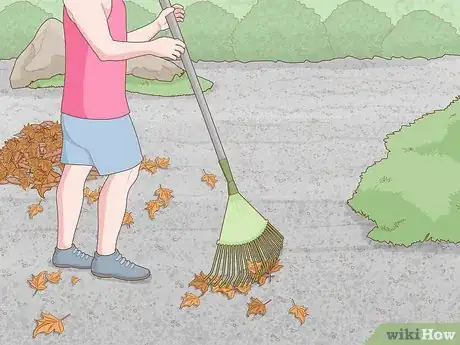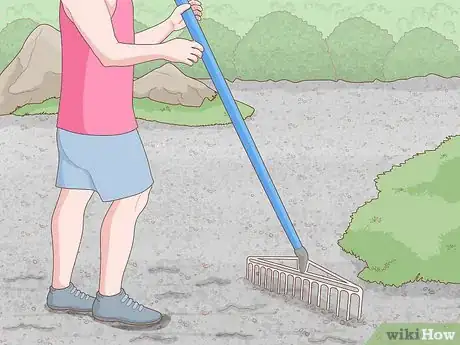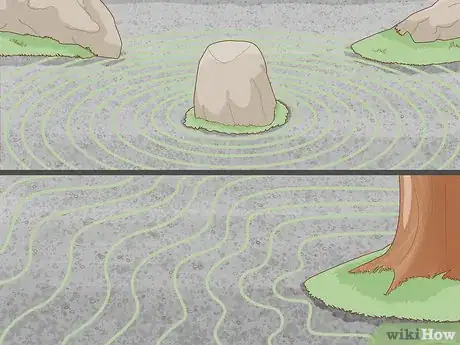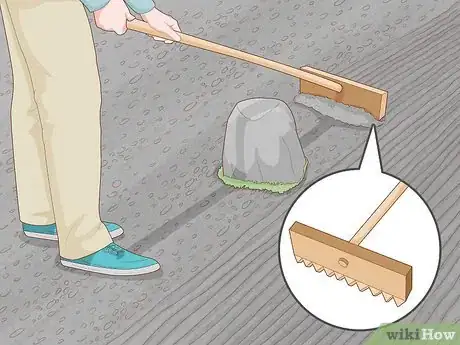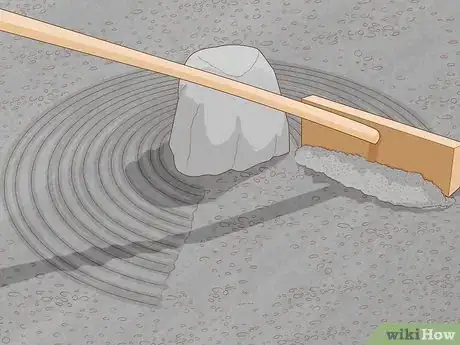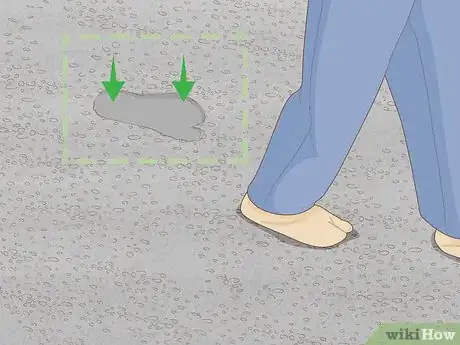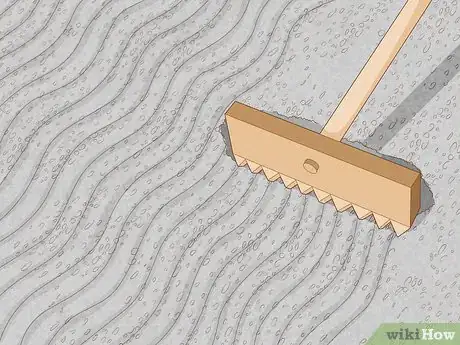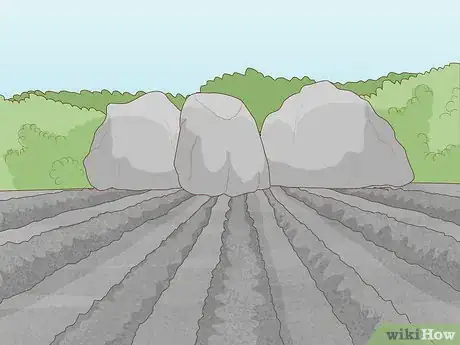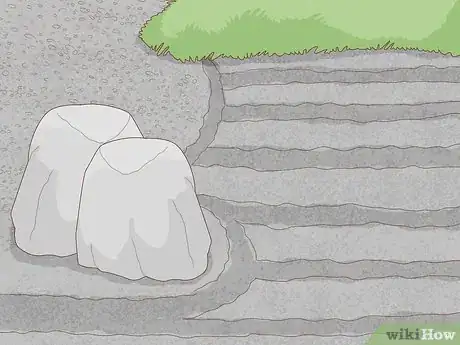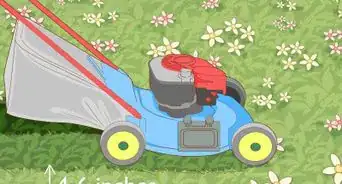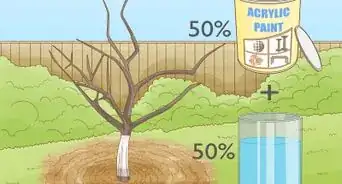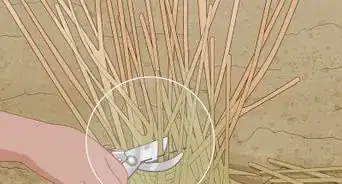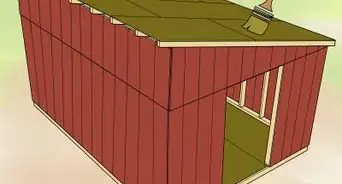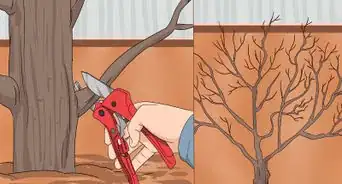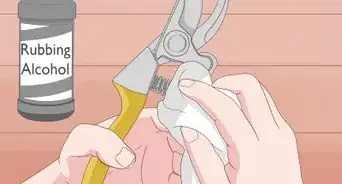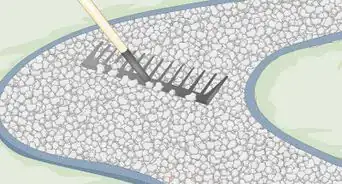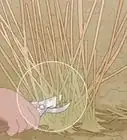This article was co-authored by wikiHow Staff. Our trained team of editors and researchers validate articles for accuracy and comprehensiveness. wikiHow's Content Management Team carefully monitors the work from our editorial staff to ensure that each article is backed by trusted research and meets our high quality standards.
There are 9 references cited in this article, which can be found at the bottom of the page.
This article has been viewed 94,404 times.
Learn more...
For centuries, monks in Japan have perfected the art of raking zen gardens to reach a meditative state. Now, people around the world build Japanese-inspired gardens and rake the gravel or sand into beautiful patterns. Start by learning how to rake a garden into the water drop design, one of the most common patterns. After you’ve learned the basics, you can experiment with other patterns or create your own. Soon you will be feeling serene as you practice this old art.
Steps
Preparing the Surface
-
1Remove any leaves and sticks to create a flat surface. You want your garden to be clear of debris so that your design stands out. If there are just a few scattered leaves, you can pick them up with your hands. If there are a lot, it will be easier to use a broom.[1]
-
2Smooth the gravel or sand with a metal rake so the pattern will show up. Use a fine-toothed metal rake to smooth out the gravel to an even thickness. You don’t want any mounds or dips in the gravel. The metal rake will trace fine lines in the gravel, but they will get covered by your design.[2]
- You can get a metal rake at most gardening stores.
Advertisement -
3Choose a pattern that accommodates your garden’s best features. Take into account the elements in the garden. Does the garden feature large stones? A tree? A walkway? Plan your design to best feature these elements.
- It’s important to have a pattern in mind before you start raking. That way, you can plan ahead about which part of the garden to rake first, so that you don’t end up stepping on your design and messing it up with footprints.[3]
- The water drop wave pattern is one of the most common methods. It’s called maru-uzu-mon in Japanese. It features straight lines across the whole garden, broken up by circles tracing around the large stones. The circles create the illusion of ripples in water.[4]
Raking in a Water Drop Wave Pattern
-
1Rake straight lines across the gravel or sand with the wide-toothed wooden rake. Start at one side of the garden and pull the rake all the way to the other side in a straight line. Then turn around and rake beside your previous lines. [5]
- The wide-toothed wooden rake is different from most gardening rakes. Its teeth are large and set far apart so that they can trace deep grooves into the sand or gravel. You can get a wooden rake specifically for Japanese gardening at many garden stores or online.
- Make sure not to step on your lines! If you do, go over them again with the wooden rake.
-
2
-
3Rake circles around the large stones to create the illusion of ripples. Stand on the stone, if possible, and drag the wooden rake in a circle around the stone. Repeat until the grooves in the gravel are deep and precise.[8]
-
4Step lightly if you have to step on your design. Try to spread your weight evenly over your toes. This takes a lot of practice, so don’t worry if your footprints show up. Just drag the rake after the footprints to cover them up.
-
5Breathe deeply and relish the peace. Remember, raking a zen garden is more about your state of mind than the finished product. Take deep breaths and try to focus on the calming motion of raking the pebbles.
- Don’t worry if the pattern doesn’t look perfect! After a lot of practice, the raking will get easier.
Experimenting with Other Designs
-
1Play with long, wavy lines in the sand or gravel to imitate a stream. Just drag your rake with a gentle wiggle to create the look of a stream. In Japanese gardening, a meandering stream pattern is called Kyokusen-mon.[9]
-
2Try simple, straight lines that extend across the whole garden. These patterns are called chokusen-mon. If your garden has many other elements, like a pond, or many rocks, a simple straight-line design will make it feel uncluttered, and lead the eye soothingly across the landscape.[10]
-
3Construct raised mounds in the sand or gravel. These mounds are called mori-zuna. They traditionally represent the water that visitors to a temple would use to ritually purify themselves. The mounds can also have an aesthetic purpose to guide the eye around the garden.
- You can then make the ripple pattern around your raised mounds to accentuate them.
-
4Create your own design. Combine elements of circles, straight lines, and wiggly lines to make your own pattern that best fits your garden, the season, and your mood. In traditional Japanese gardens, monks often change the raking pattern to fit the season.
- A straight line pattern can evoke a frozen winter landscape.
- Curvy lines can bring to mind rushing water in spring or summer.
- Trace the shape of a fallen leaf in a meandering stream pattern to create an autumn scene.
Community Q&A
-
QuestionWhere can I buy the saw-tooth and dowel-tooth wooden rake? I have a 3/8" crushed pea gravel. What size tooth do I need?
 Community AnswerYou should be able to find the rakes at a hardware store. You will need a 1/3" to 1/2" tooth on your rake so they will not break off.
Community AnswerYou should be able to find the rakes at a hardware store. You will need a 1/3" to 1/2" tooth on your rake so they will not break off. -
QuestionI can't really see the ripples. What am I doing wrong?
 Sophie WalfordCommunity AnswerMake sure you have an appropriate rake for your zen garden, then slowly make whatever pattern you want. If you do some research, you will find some patterns to copy if you are struggling to find your own.
Sophie WalfordCommunity AnswerMake sure you have an appropriate rake for your zen garden, then slowly make whatever pattern you want. If you do some research, you will find some patterns to copy if you are struggling to find your own. -
QuestionWhere can I buy a Japanese rake for small sand gardens?
 Sophie WalfordCommunity AnswerYou can find them at pretty much any outdoor/garden center, or you can buy them online. Most retailers will have smaller/miniature rakes.
Sophie WalfordCommunity AnswerYou can find them at pretty much any outdoor/garden center, or you can buy them online. Most retailers will have smaller/miniature rakes.
Things You’ll Need
- Soft broom
- Fine-toothed metal rake
- Wide-toothed wooden rake
References
- ↑ https://youtu.be/kff7GsbagQo?t=37
- ↑ https://youtu.be/kff7GsbagQo?t=176
- ↑ http://www.japanesegardens.jp/explanations/000106.php
- ↑ http://www.japanesegardens.jp/explanations/000106.php
- ↑ https://youtu.be/pzAS_i9DuHI?t=122
- ↑ https://youtu.be/pzAS_i9DuHI?t=149
- ↑ https://youtu.be/pzAS_i9DuHI?t=193
- ↑ https://youtu.be/pzAS_i9DuHI?t=395
- ↑ http://www.japanesegardens.jp/explanations/000106.php
